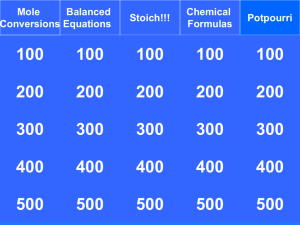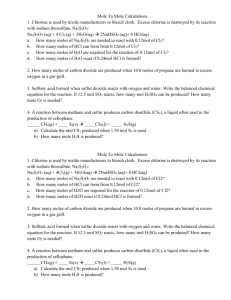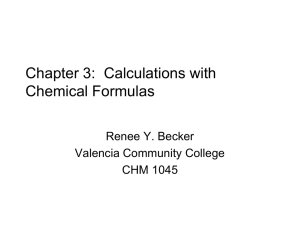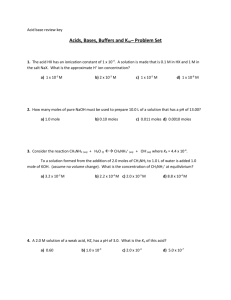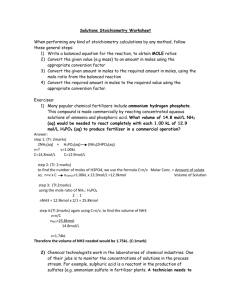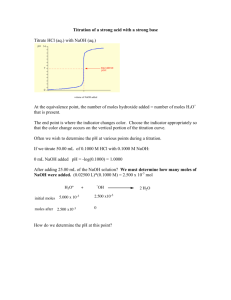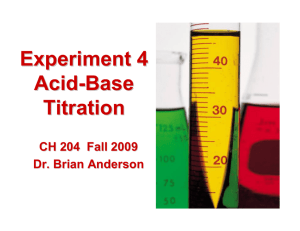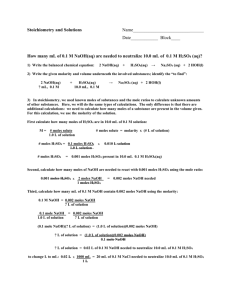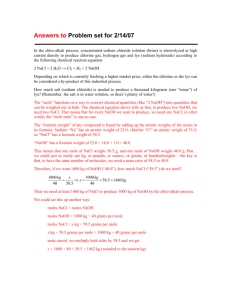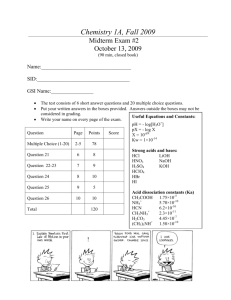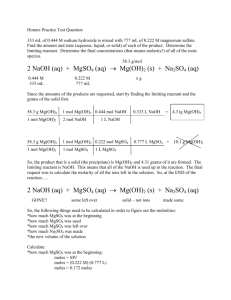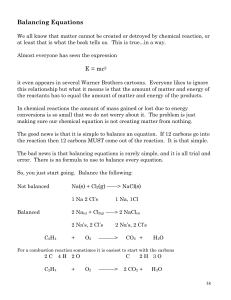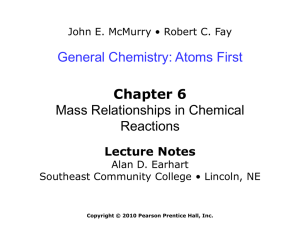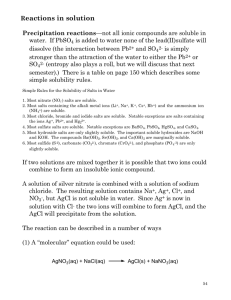Stoichiometry—Mass to Mole Name: Period: Date: ______ 1
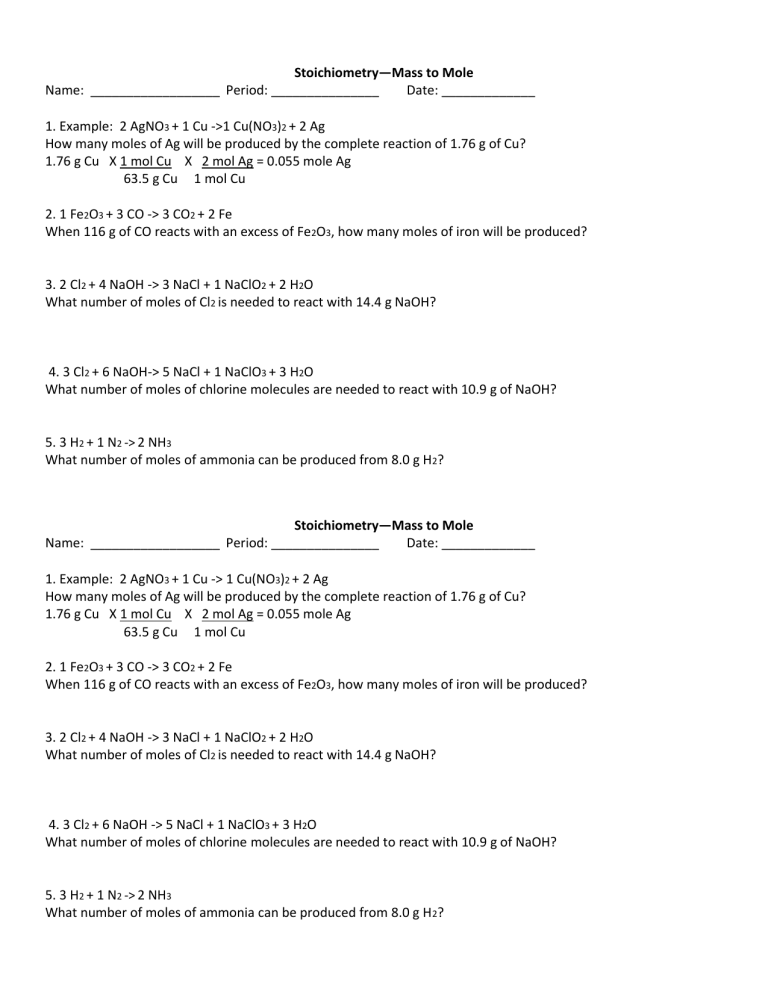
Stoichiometry—Mass to Mole
Name: __________________ Period: _______________ Date: _____________
1. Example: 2 AgNO
3
+ 1 Cu ->1 Cu(NO
3
)
2
+ 2 Ag
How many moles of Ag will be produced by the complete reaction of 1.76 g of Cu?
1.76 g Cu X 1 mol Cu X 2 mol Ag = 0.055 mole Ag
63.5 g Cu 1 mol Cu
2. 1 Fe
2
O
3
+ 3 CO -> 3 CO
2
+ 2 Fe
When 116 g of CO reacts with an excess of Fe
2
O
3
, how many moles of iron will be produced?
3. 2 Cl
2
+ 4 NaOH -> 3 NaCl + 1 NaClO
2
+ 2 H
2
O
What number of moles of Cl
2 is needed to react with 14.4 g NaOH?
4. 3 Cl
2
+ 6 NaOH-> 5 NaCl + 1 NaClO
3
+ 3 H
2
O
What number of moles of chlorine molecules are needed to react with 10.9 g of NaOH?
5. 3 H
2
+ 1 N
2
-> 2 NH
3
What number of moles of ammonia can be produced from 8.0 g H
2
?
Stoichiometry—Mass to Mole
Name: __________________ Period: _______________ Date: _____________
1. Example: 2 AgNO
3
+ 1 Cu -> 1 Cu(NO
3
)
2
+ 2 Ag
How many moles of Ag will be produced by the complete reaction of 1.76 g of Cu?
1.76 g Cu X 1 mol Cu X 2 mol Ag = 0.055 mole Ag
63.5 g Cu 1 mol Cu
2. 1 Fe
2
O
3
+ 3 CO -> 3 CO
2
+ 2 Fe
When 116 g of CO reacts with an excess of Fe
2
O
3
, how many moles of iron will be produced?
3. 2 Cl
2
+ 4 NaOH -> 3 NaCl + 1 NaClO
2
+ 2 H
2
O
What number of moles of Cl
2 is needed to react with 14.4 g NaOH?
4. 3 Cl
2
+ 6 NaOH -> 5 NaCl + 1 NaClO
3
+ 3 H
2
O
What number of moles of chlorine molecules are needed to react with 10.9 g of NaOH?
5. 3 H
2
+ 1 N
2
-> 2 NH
3
What number of moles of ammonia can be produced from 8.0 g H
2
?







